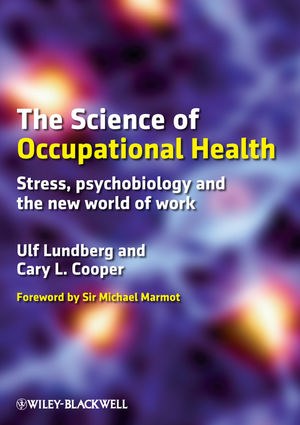The Science of Occupational Health: Stress, Psychobiology, and the New World of WorkISBN: 978-1-4051-9914-8
Paperback
184 pages
December 2010, Wiley-Blackwell
 This is a Print-on-Demand title. It will be printed specifically to fill your order. Please allow an additional 10-15 days delivery time. The book is not returnable.
|
||||||
Foreword Sir Michael Marmot, UCL
Acknowledgements
1 Introduction: History of Work and Health
General background and aim
Work and health from an evolutionary perspective
About this book
2 The New Workplace in a Rapidly Changing World
Global economy and global competition
Flexible organisations – flexible workers
Health consequences of ‘sickness presenteeism’
Rationalisation
Sources of stress at work
3 The New World of Work
Lean manufacturing and just-in-time production
Frequent restructuring
Lifelong learning, work and family-life balance
Long working hours and overtime
The role of modern communication technology and telecommuting: work without boundaries, or endless work
Diffuse distinction between work and other parts of life
The challenge for health and well-being in organisations in the future
A flexible workforce
4 Work as a Source of Stimulation and Health or a Cause of Distress and Illness
Work-related stress models
Justice
Positive and negative work
Job satisfaction
Workaholism
Type A behaviour
Job strain and heart disorder
Conclusion
5 Responses to Stress
Mind–body interaction
The neuroendocrine stress systems
The cardiovascular system
Coping with stress
Acute stress
Chronic stress
Short-term versus long-term stress
Importance of sleep
Allostatic load
Catabolic and anabolic processes
6 Stress-related Health Problems
Chronic fatigue, depression, burnout
Cardiovascular disorders
Immune function
Cognitive function
Obesity, diabetes – the metabolic syndrome
Musculoskeletal disorders
Ulcers
HIV, AIDS and cancer
When should I be worried?
How can any treatment be efficient?
7 Stress Hormones at Work
8 Socioeconomic Status and Health
9 Health Promotion
Health intervention, stress reduction
Managing stress in a changing workforce
Individual interventions
Healthy work
Mental capital and well-being
Interventions and policies
Physically risky jobs
Positive psychology
Restorative environments and recreation
Sleep
Physical activity
10 Gender Differences
Symptoms, health and life expectancy
Work tasks
Unpaid work and total workload
Children, women and stress
11 Preventive Strategies
Occupational hazards
Health promotion
Occupational conditions in Europe
Healthy work
SES and health
Work–life balance
What can we do to reduce stress?
Comments on preventive strategies
12 The Future Workplace from a Stress–Health Perspective
A changing world
Work and health
Stress, well-being and productivity
Demographic changes in Europe and Japan
Global issues
References
Index



